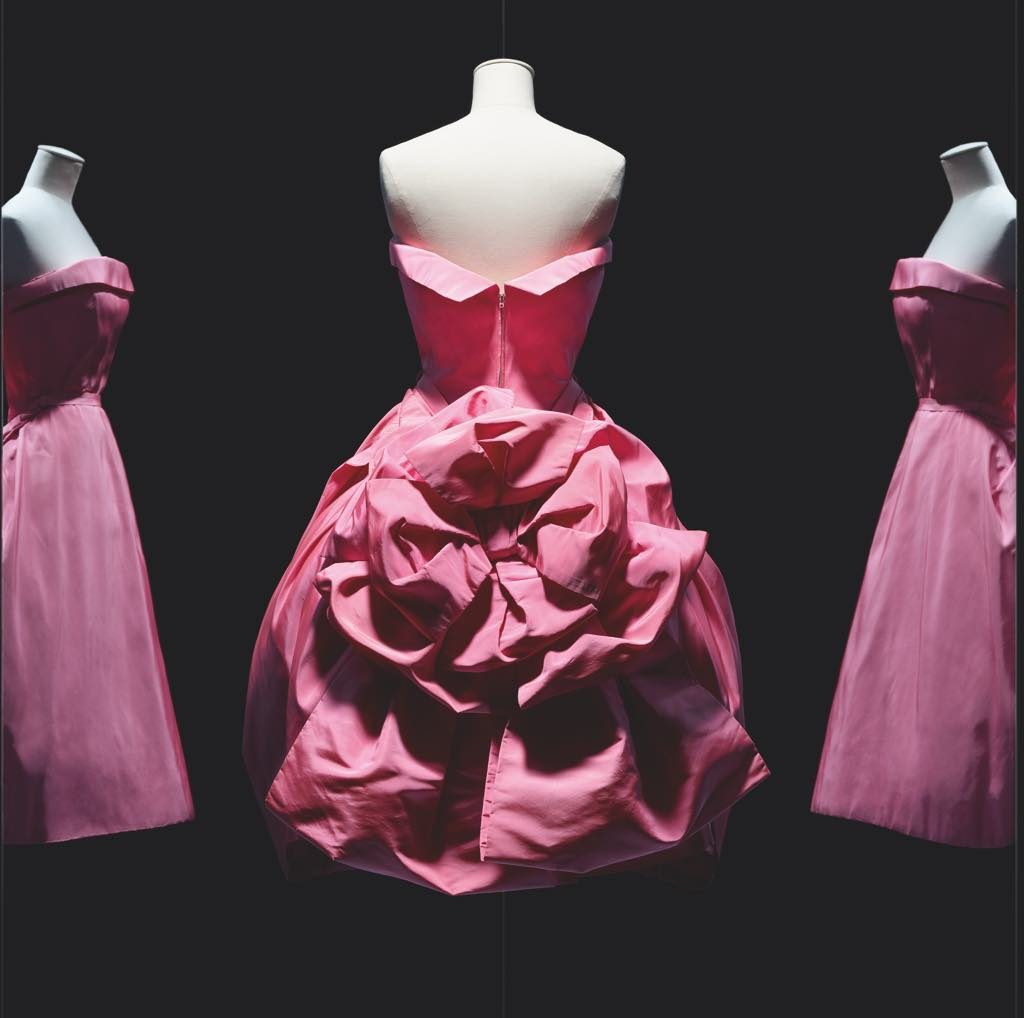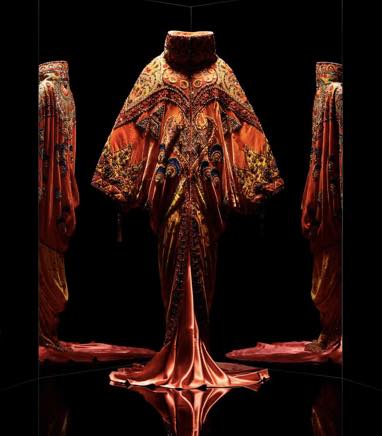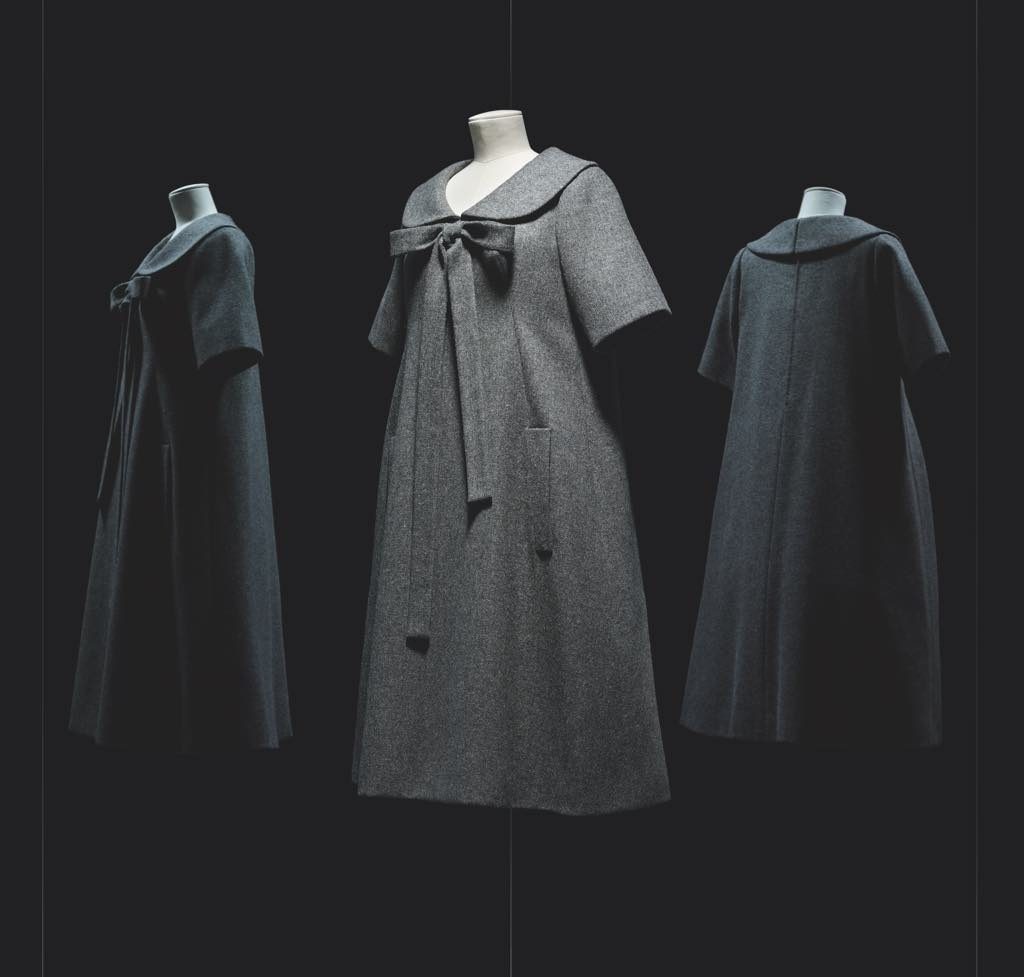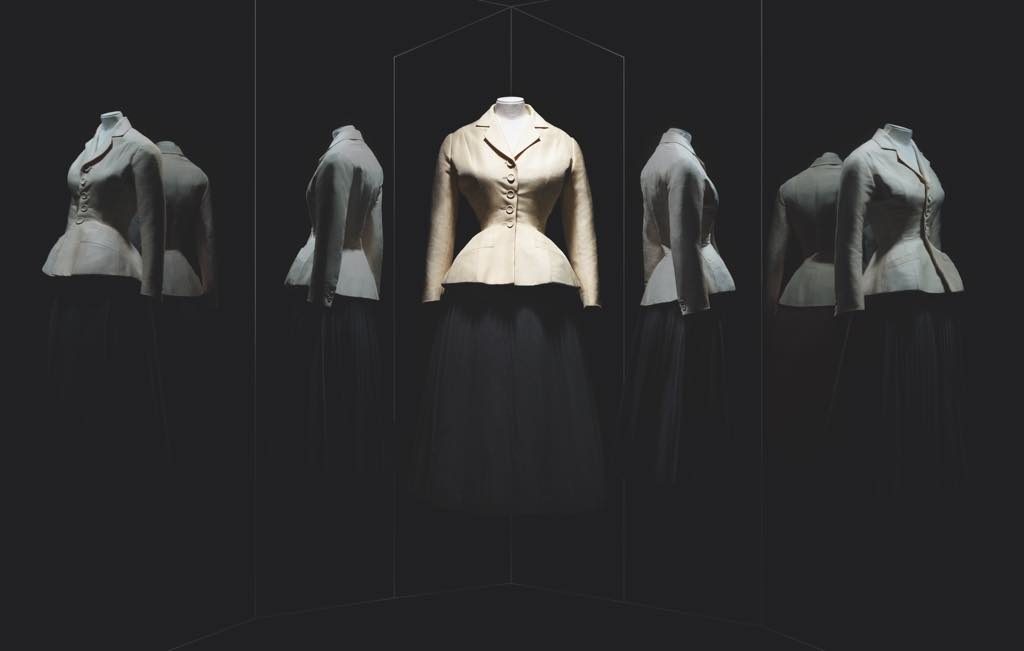
Like the creations of John Galliano for Dior, the current exhibition at at the Musée des Arts Décoratifs, “Christian Dior: Designer of Dreams,” is over-the-top spectacular.
After an extensive introduction to the life of Dior the man in photos, film clips, quotations, letters and much more, the fashion show begins (bring a fan; it’s really hot in there). Arranged by theme, it is a lengthy parade of the creations of the seven Dior designers (including the man himself) who worked for the house over the years, all mixed up together.

After looking at a number of these designs, I began to excel at a game of “guess the designer” before looking at the label. With Galliano, you can never go wrong: his designs are always the most outrageous, the most theatrical, the most wonderfully mad.

I soon realized that the most streamlined, elegant pieces were by Raf Simons, but the others were somewhat more difficult to pinhole. Yves Saint Laurent, who took over as head designer when he was only 21 years old, after Dior’s death in 1957, stayed close to his master’s style while introducing his own innovations like the Trapèze dress in 1958.
Marc Bohan, who took the helm when Saint Laurent was drafted in 1960 and stayed for 30 years, has an understated style and seems surprisingly underrepresented in the show, considering his long tenure. Since he was there during the Swinging Sixties, however, any mini-skirts are sure to be his.
Gianfranco Ferré took over from Bohan in 1989 and stayed at the house for eight years. His style may have been flamboyant, but he was later outdone by Galliano.

The current designer, Maria Grazia Chiuri, seems at first to have a sober style, with lots of soft, neutral colors and plenty of tulle. At the end of the exhibition, however, more structured garments in black or white were shown, some of them quite beautiful in their simplicity.
Christian Dior himself, the man who created the empire in 1946, hardly needs to be introduced. After the privations of World War II, he freed women of their dowdy clothes and dressed them up in his “New Look,” with cinched waists and full skirts that harked back to the ancien régime and shouted clearly “I am woman! (and I no longer have to wear the short skirts, drab colors and poor fabrics we were stuck with during the war years).”
Some of his original designs in the exhibition now look a bit dated – the “Satan-red” “Diablesse” shirt dress is an example, but cinching its waist with a turquoise belt was a daringly brilliant idea. Many more outfits still look fantastic and could easily be worn today.
 The more sensational sections of the show include an amusing “colorama” consisting of a rainbow of vitrines, color by color, each filled with miniatures garments and a panoply of accessories.
The more sensational sections of the show include an amusing “colorama” consisting of a rainbow of vitrines, color by color, each filled with miniatures garments and a panoply of accessories.
On and on it goes, with examinations of every aspect of the house, including (to mention just a few) a giant wall of magazine covers featuring Dior designs; photos of rich and famous ladies like Liz, Jackie and Marilyn wearing Dior; a section spotlighting makeup artists and perfumers associated with the house; and another showing artworks and garments to demonstrate the influence of 18th-century fashion on Dior designs.
 The exhibition ends with a finale that outshines all the other spectacular displays: the enormous grand hall of the museum, is turned into a kind of Dior discothèque, a glitzy, glamorous hall of mirrors full of gold and evoking the glory of Versailles, complete with gleaming and glittering party dresses and evening gowns, and magical lighting effects.
The exhibition ends with a finale that outshines all the other spectacular displays: the enormous grand hall of the museum, is turned into a kind of Dior discothèque, a glitzy, glamorous hall of mirrors full of gold and evoking the glory of Versailles, complete with gleaming and glittering party dresses and evening gowns, and magical lighting effects.
Needless to say, the exhibition is a must for anyone with the slightest personal or professional interest in fashion history. With this exhaustive and overwhelming show, it would be hard to imagine that the house of Dior has any secrets left.
Favorite

When did it start? When does it end? Bad reporting.
If you look at the upper righthand side of the page, you will see that the exhibition continues until Jan. 7, 2018.